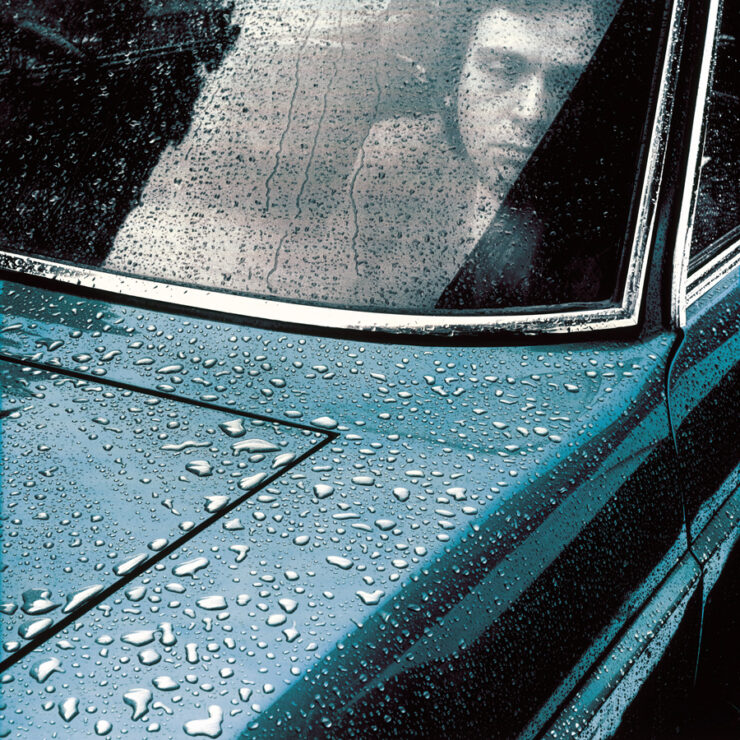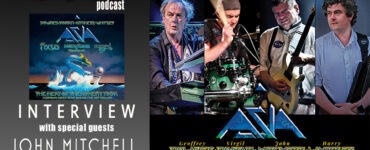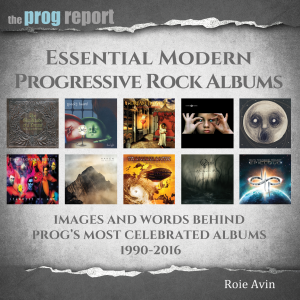by Geoff Bailie
When Peter Gabriel left Genesis after the release of The Lamb, no one knew what would come next for the enigmatic singer. He would release his self-titled debut, later dubbed ‘Car’ on Feb 25th, 1977. It would ultimately launch what would become a hugely successful solo career. Here is a look at the 8 tracks that make up the incredible debut.
Moribund the Burgermeister
For an artist commencing a brand new solo career, the opening track starts in a way that would be familiar to listeners’ ears. The plodding opening of the track has sonic overtones of “Grand Parade of Lifeless Packaging” and “The Colony of Slippermen” from Lamb Lies Down On Broadway and the good news is, at least initially, this new Gabriel sounds a lot like the old one.
There was always a dilemma for Peter doing solo material… Genesis got straight into making their next album after he left and had released both A Trick of the Tail and Wind and Wuthering before Peter’s first solo album, continuing the upward trajectory of their success. A casual observer may ask: well what did Gabriel actually contribute to Genesis? ‘Moribund ‘was a track that helped answer that. What “freedom” from Genesis meant was that Gabriel could add previously-unavailable colors to his canvas, as the brass and strings fanfare the chorus.
While the post-Gabriel Genesis lyric writing went in a more narrative direction, it’s hard to even fathom what this opening track is about – but actually, does it matter? The track seems to feature two characters, one that starts the song, and the other, the eponymous “Moribund the Burgermeister” (translated ‘mayor’). What the first person did and what Moribund wants to find out is not particularly clear, but that doesn’t really matter. The characterizations are great and Gabriel’s vocal inflections bring them to life.
The track is also our introduction to the album’s musicians, a compromise between the choice of Gabriel and producer, Bob Ezrin. Ezrin brought a trusted American rhythm section in Allan Schwartzberg (drums) and Tony Levin (bass), together with percussionist Jimmy Maelen, guitarist Steve Hunter and keyboardist, Jozef Chirowski. Peter added Larry Fast (keyboards) and Robert Fripp (guitar) for the European/ soundscape aspects of the sound. Levin and Fast remained integral parts of his studio and live band for many years and have contributed a lot to the catalogue with distinct, arguably unique, styles.
“Moribund” was a regular fixture in the set list right through to 1980 and it was in the live arena that the theatrics of the track could come to life. In the 1980 Rockpalast performance (below) Gabriel creates the title character by shining a stage light under his face, the shadows distorting his features (a trick his successor in Genesis, Phil Collins, used many years later performing the song ‘Mama’ in concert). The track disappeared from set lists from the “4”/”Security” tour onwards but made a surprise reappearance for three shows in 2007’s “The Warm Up Tour”, which was one of the first times Peter looked back on the early albums in concert. We’ve no idea why the song was dropped part way through, but the recordings available via official bootlegs show first class performances of the song in its new incarnation.
Solsbury Hill
The first single from the album and the first proper release from Gabriel post-Genesis is personal, autobiographical and a statement of intent. Gabriel’s walk/ runs up “Solsbury Hill” were a real part of his post-Genesis life. The thoughts and feelings when viewing an area from a hill top are something that most can relate to – the sense of perspective and, perhaps, our individual smallness, combined with being above all you can see is quite a sensation.
The hill in question is believed to have had an occupied Iron Age for that was occupied between 300 and 100BC. If you want to hear a sound recording from the actual “Solsbury Hill,’ the track ‘A Quiet Moment’ from ‘New Blood’ is just that, followed by a piano / strings version of the song itself.
As a debut single, it certainly is in a different mould to what Gabriel did in Genesis. Yes, the 7/4 time signature is, on paper, an odd metre, but the marching beat means you don’t get lost in the syncopation. (His former band mates even proved you can use a 13/8 time signature on a hit single: ‘Turn It On Again’). The acoustic guitar riff that propels the song is folksy but powerful, and all of the instrumentation is sufficiently subtle to not detract from the masterful vocal. Guitar lovers will be interested to learn that the acoustic guitar parts aren’t a 12-string guitar, but instead a multi-tracked Travis strung guitar
Allan Schwartzberg was given a shaker, a telephone directory and a drumstick instead of his regular kit, and some of the syn-drum type noises you can hear are actually Larry Fast using his keyboards. The arrangement builds with some crashes, power chords and then a cacophony of various screams, groans and grunts by Gabriel in stereo on the fade out.
www.setlist.fm tells us that “Solsbury Hill” is the most played song in Gabriel’s solo live career, with 761 appearances (for context, number 2 in the list is Biko with a mere 569!). As a statement of intent, and a lasting anthem, there’s simply nothing like it.
Modern Love
From the mellow plains of “Solsbury,” we move to something more visceral. “Modern Love” is a lyrical tour through female figures from history and literature (Diana, Mona Lisa, Venus, Lady Godiva) expressing frustration at the modern ways of love.
We hear a very different vocal tone being used here. This was of course the beginning of the UK punk era, for many the antithesis of what Genesis and other prog bands stood for. With his new found freedom, Gabriel felt able to delve into the commercial, the experimental and the contemporary, and aspects of this song reflect the latter.
Look out also for the rarely seen video for this track, where a shaggy haired Peter throws shapes on a travelator, dressed in knees pads and a fencing mask, surrounded by angelic, sparsely clad females. Very much of its time, and quite funny in retrospect.
Excuse Me
One of Peter’s first post Genesis collaborations was with a poet called Martin Hall and the only song that made it through to a PG album is this one. I’m fairly sure it’s the only example of a prog/barbershop cross-over and the banjo-led sing along couldn’t be further from “Slippermen” and “Doktor Dyper.” There also can’t be many 1977 rock albums that feature a tuba solo by one of rock’s finest bassists and banjo played by Robert Fripp who, a few months later, would be recording the experimental “Heroes” with Bowie and Eno in Berlin.
Even so, the song was part of the set on Gabriel’s inaugral solo tour, but at one point served an alternative purpose… When the band were stopped at the West German border while on tour, and asked to prove they were the traveling musicians they claimed to be, a quick acca pella rendition of this song demonstrated their credentials and the guards sent them on their way.
Humdrum
The closing track on side one begins with Gabriel singing over an electric piano backing, before a tango rhythm, complete with castanets and accordion, leads to a flute solo and, soon, the London Symphony Orchestra!
This song has been interpreted by some as being about the tensions Gabriel experienced being both a rock star and husband/father. Imagery of driving into the sun could be his departure from Genesis. Women and children feature throughout and the song ends with his dedication to his “liebe schoen”, presumably daughter Anna-Marie.
Like “Moribund…” the song was briefly revisited by Peter on his 2007 tour, but it only survived 6 shows.
Slowburn
Before fascinating lyrics arrives, “Slowburn” kicks off with a searing guitar solo from Bob Ezrin “regular” Dick Wagner. Biblical imagery of the Tower of Babel and the Apocalypse, combine with a tale of escape from somewhere or something, before a refrain asking someone to stay the night… it might be a song of redemption or break up, but the precise meaning doesn’t really matter! Musically it’s a multi-section journey from the strident verses, to the dropped back refrain, and a Lamb-like middle eight before the lead guitar returns and propels the song to the conclusion.
“Slowburn” featured in the tour sets for the first and second solo album before disappearing into obscurity.
Waiting for the Big One
If a debut solo album was an opportunity to do something very different then, barbershop of “Excuse Me” aside, this is one of the most unexpected tracks. Genesis, despite taking inspiration from bands like the Rolling Stones, didn’t allude to “the blues” in their repertoire, which makes this song an interesting one. The sound of this track is like Gabriel does Tom Waits, with the barroom slur of a man who has too much to drink and is down on his luck. The anticipated “big one” could be a crash or could be a recovery, but “wait” they still do.
Given its blues base, it’s no surprise that it’s Hunter rather than Fripp who handles the guitar solos, along with some expert piano playing from Jozef Chirowski, another Ezrin (and Alice Cooper) alumnus. The ending of the song, repeating the final phrase, slowing down, and reprising again staggers through to its conclusion.
In the live arena, the light hearted spirit of this song was reflected in how the band approached the track. The 1978 Rockpalast performance (below) begins with Timmy Copello on keyboards before Gabriel is picked out in the middle of the audience by a spotlight. As he sings the opening lines, it’s clear that onstage things have changed a bit with some instrument swapping going on between the musicians- Tony Levin playing drums and Jerry Marotta on bass. As Gabriel handshakes and kisses his way to the stage, Levin relinquishes the drum stool, moving to keyboards, to let his boss take over the kit, as Copello grabs his saxophone. Rock star poses abound, as McGinnis, Marotta and Copello crash to the ground and this fun number comes to a close. For an artist often accused of taking himself too seriously, this is a fun stage number.
Down the Dolce Vita
The most 1970s sounding track on the album is also the most Ezrin sounding one. The disco funk of the intro is in sharp contrast to the burst of the London Symphony Orchestra which marks a sharp left turn. The story is believed to be part of the (never completed) Mozo cycle, with Aeron (a corruption of Aaron?) and Gorhamn among the crew making journey, out of the harbour, into the sea and trying to survive in the process.
The song is also experimental and creative in how it is executed – check out the section where the vocal is backed by only percussion and what sounds like a church bell. While some of the sonics couldn’t be reproduced live, Gabriel’s captivating vocals and “crazy” cry brought the soundtrack and theatrical qualities to live when played in concert.
Here Comes the Flood
What can be said about this closing track? Along with “Solsbury Hill,” it has been a very consistent feature of Gabriel’s set lists, and has appeared in a variety of versions. At its core, it is a piano ballad written in the immediate aftermath of leaving Genesis. We can speculate whether it was inspired by those events, but Gabriel himself explains the story behind the song as being inspired by short wave radio, and a society where people can read each other’s minds, exposing the honest and the dishonest. The flood is a psychic one, as peoples’ minds and motives are revealed. It’s also thought to be part of the Mozo story.
Demos circulate of a 1975 recording of the song with, it is rumoured, former Genesis companion and school friend, Ant Phillips playing a quite flowery piano arrangement. When the song was presented to Bob Ezrin, he saw its potential to be an epic production number. Gabriel’s vision for a more simple, stripped back, fragile arrangement didn’t make the final cut. For something closer to his original intention, check out the version on Robert Fripp’s Exposure album. A further version was was included in the 1990 compilation “Shaking the Tree” in a piano/ vocal arrangement. My favorite version is a version from a BBC TV show focused on Kate Bush, on which Gabriel features as a guest. Completely solo, with his voice at the height of its powers in 1979, it shows the man, perhaps now associated with albums which take years to make with multilayered production, accompanying himself and conveying the passion and power of the song.
What happened next?
Gabriel went on tour to support the release of the album, performing in a grey track suit (in stark contrast to the Genesis costumes and make up), joined by the album band, including an out of sight Fripp, billed Dusty Rhodes/ Rusty Toads.
The set list focused heavily on Car, beginning and ending with versions of “Here Comes the Flood.” It included covers of some of the soul songs which influenced the young Peter (“I Heard It Through The Grapevine” and “Ain’t That Peculiar”), some 1960s pop (a snarling version of The Kinks’ “All Day and All of the Night”), and a nod to his former band in Back In New York City- a song that his predecessors would largely avoid since his departure. The set was also supplemented by two songs that ended up on his next album, “On The Air” and “Song Without Words,” which became Indigo. The tour was a success in showing that Gabriel was a force to be reckoned with, and while he took quite some time longer than his former band mates to reach the stadiums of the world, this experimental and progressive music struck a chord with fans and record buyers alike.
Car is an album that stands up to scrutiny in 2020. Its universal themes and excellent performances and production ensures it is still talked about today.








Peter Gabriel and Bill Ripken: lookalikes from different entertainment worlds